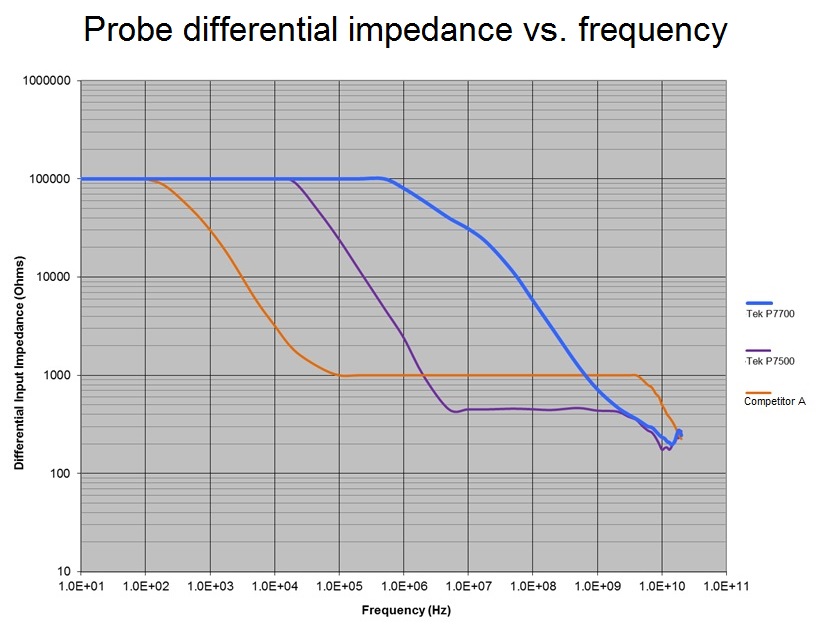The P7700 series TriMode (differential, single-ended, and common modes) probes are designed for the manufacturer’s performance oscilloscopes to minimize probe loading and improve access to test locations on smaller, more densely packed boards, such as those supporting Low-Power DDR4 and MIPI D-PHY and C-PHY standards. Versions are available for signals with maximum frequencies of 8, 13, 16, and 20 GHz, and the unique probe tips that supply this capability are designed to lower the cost of ownership.

P7700 series TekFlex connector with three types of probe tips.
Unlike earlier probe designs, which have their tips connected by long cables to a remote input amplifier at the scope chassis, P7700 probes have their input amplifier IC located on the tip, less than 4 mm from the connection point. This minimizes signal loss, probe tip capacitance, and probe-induced noise. In addition, the signal path is fully characterized at the factory and its characterization parameters stored in the tip, so the scope can automatically access the stored parameters to de-embed the probe effects from measurement results.

The probe-cable-to-tip connection, called the TekFlex connector, is uniquely designed to support any of the three types of tips currently available. All of the tips connect to the cable with a simple squeeze-attach/squeeze-remove action and have a small LED that lights up to confirm connectivity from the scope to the accessory tip. The basic tip is built on a flex circuit designed for soldering to a wire that’s been soldered to a board trace; it permits vertical flexing during hook-up and measurement. Each probe is supplied with several of these tips, and extras are priced at $50 each in sets of five; good for 10 or more connections to boards, the tips are inexpensive enough to be considered expendable. The second type of solder-in tip is similar to the first but uses a coax cable instead of a flex circuit. This provides both vertical and horizontal flex capability.
The third tip, called the Browser, is intended for manual or machine-aided selection of probe points. It also attaches with the TekFlex connector and lets users adjust the distance between the two contact points to suit the probe point dimensions. A special, patent-pending tip design ensures solid contact with the probe points, and an on-tip LED provides lighting so users can clearly see the points of contact.
Available now, the probe is priced starting at $8,500 for an 8-GHz version to $20,500 for a 20-GHz one. The coax tip sells for $550 and the manual/machine Browser tip for $1,700.
Advertisement
Learn more about Tektronix





